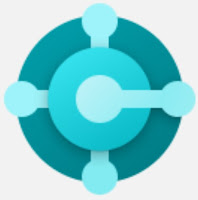 Hi Readers,
Hi Readers,As discussed in the earlier post, I am expecting everyone would have downloaded the Microsoft Dynamics 365 Business Central 2019 Wave2.
If you have not downloaded the Product yet, please download from MSDN.
In this article, we will discuss installing Microsoft Dynamics 365 Business Central 2019 Wave2 on Prem which is released today.
It is not that different from NAV installation but let's see all the steps.
1. Run the Setup after extracting the Product DVD for the Localized version that you require.
2. Click Next on the welcome screen and accept the License.
3. A new screen will appear next. Now select the Option that you want to use for Business Central, as shown below. Local installation select Advanced Installation Options.
4. In Next Screen, I will choose - Choose an installation Option instead of Installing Demo and I would like to choose components that get installed on my system.
5. As I am the developer I will choose, and select Customize as shown below.
6. I would like to install the following component. You can choose as per your requirements.
- AL Development Environment. - Only Programming Language 😀
- Server Administration Tool. - Service Panel to configure Service.
- Server. - Service Tier.
- SQL Server Database Component. - Demo Database and other SQL Component.
- Web Server Component. - Install Web Client Only Client Option.
7. In the next window, Specify Installation Parameters. I love to keep port numbers with version. So all port numbers to be used in my installation will start with 15 😀
If you don't have any other NAV Version installed you can keep them to standard values - 15045,15046, 15047, 15048 and 15049.
8. After setting up all parameters, click apply which will start the installation process.
9. After installation is completed, the system will prompt a confirmation message as below.
10. Let's see what got installed after the installation is completed.
Three Components -
- Business Central Administration. (Stop, Start and Manage Services)
- Business Central Administration Shell. (Manage Services using PowerShell cmdlet)
- Business Central Web Client. (Only Client with Business Central Wave 2 Release).
Next article, we will discuss more about 2019 Wave 2 Release.
Stay Tuned for more. I will come back asap.
Regards,
Saurav Dhyani
www.sauravdhyani.com








I am getting this error
ReplyDelete------
The service 'Microsoft Dynamics 365 Business Central Server [BC150]' (MicrosoftDynamicsNavServer$BC150) failed to start. This can be caused by one of several issues. For example, the password for the account that runs the service may be incorrect, or there could be a conflict in port sharing for the port settings for the service, or you have specified that the port for the server should be opened in the Windows firewall even though the Windows firewall is not enabled on the computer. For more information, see the event viewer.
Created on "SERVER"
Even I have changed login account as Service account also. Actually it is domain user and I am installing on Database Server. I have changed Domain/Administrator as Service account in Database Server (BC365 Server
Hi Kris,
DeleteIt seems you have multiple version of NAV / BC are installed locally. In that case you need to make sure that all ports that this service is using are unique. In the article i am using port numbers starting with 15.
Update/Change port number in service tier and try restarting service.
Hi
ReplyDeleteHow to use client access, there is no 'Client' or Developer tools?
Hi @Kris,
DeleteOnly Client access is web client which can be accessed via web browser. Other options are phone and tablet client.
hi,
ReplyDeleteis this the same procedure to be followed if we install client instance instead of developer or not?
For Client you can choose the client option from installation menu and there will be more or less same. it may have some different parameters like server name, service name and Port numbers.
Delete